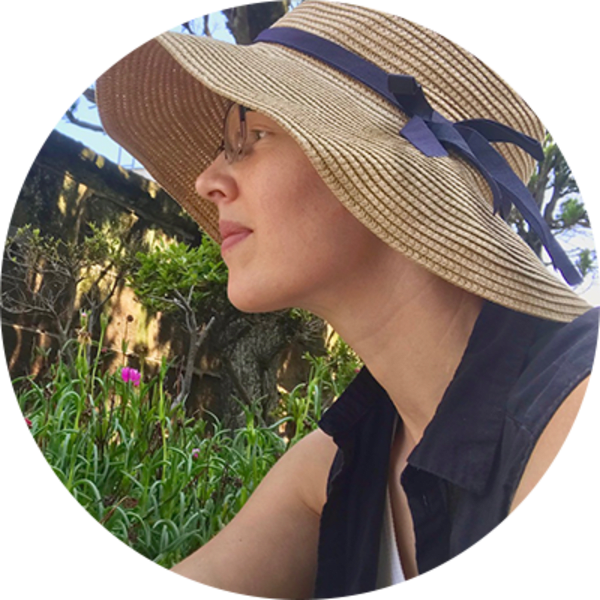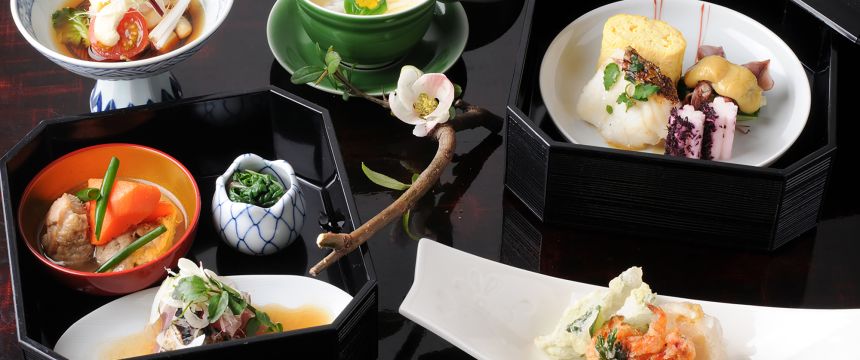Toyama City, Toyama Prefecture - Hokuriku Shinetsu

Slip away to one of Japan’s top seafood destinations and savor flavors not found elsewhere in the country. Toyama Prefecture, located on the Sea of Japan, is famous for its incredibly fresh, exceptionally delicious harvest from the sea. Also known for its breathtaking scenery of stunning coastlines and majestic mountains, it is a destination that will sate your appetite for both good food and beautiful views.
As you eat your way through the prefecture, be sure to save room for two local specialties: winter yellowtail and firefly squid. With their short seasons, these delicacies aren’t available year-round, so you will have to schedule your trip accordingly to relish these delectable gastronomic delights.
Hunt Down the Delicious Winter Yellowtail

Even in a region known for its winter yellowtail, called kanburi in Japanese, the city of Himi stands out. The yellowtail caught there between the end of November and February—known as Himi kanburi—is considered to be at its seasonal peak, with an ideal distribution of fat.

These fish are caught as they travel from Hokkaido in the north to the seas around Kyushu in the south, where they spawn. It is said that the fish know it’s time to head south when thunder snowstorms, which in Japan are peculiar to the northern Hokuriku region, begin to form. These storms, or buri okoshi (yellowtail rousers), send the fish swimming south. When they reach Himi, located at roughly the halfway point, they are at their fattiest.
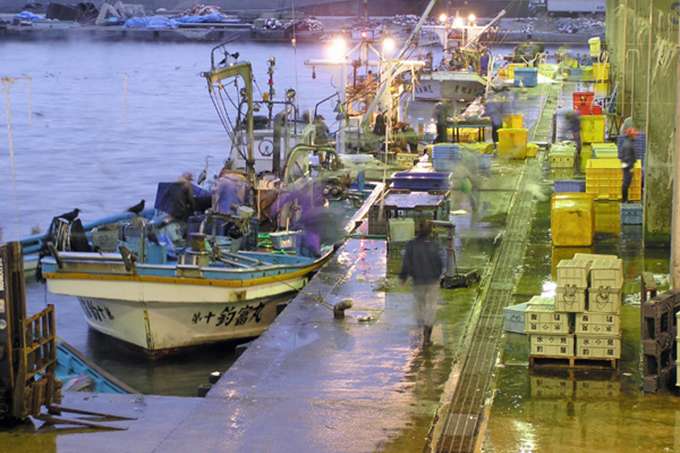
Himi’s location on the coast of Toyama Bay, with the Noto Peninsula jutting out to the northwest is ideal. The peninsula traps the traveling yellowtail, allowing local fishing operations to easily catch the fish in great numbers. The yellowtail’s perfect distribution of fat when it reaches Himi and the city’s optimal location along the bay have led Himi to become known as the hunting ground for the winter yellowtail.

To be designated as Himi winter yellowtail, the fish must fulfill three requirements: They must be caught in Toyama Bay with fixed nets, must be sold at auction at the Himi fishing harbor, and must weigh over six kilograms with a healthy shape.
Not all winter yellowtail make the grade, but those that do can be found at a number of restaurants in Himi.
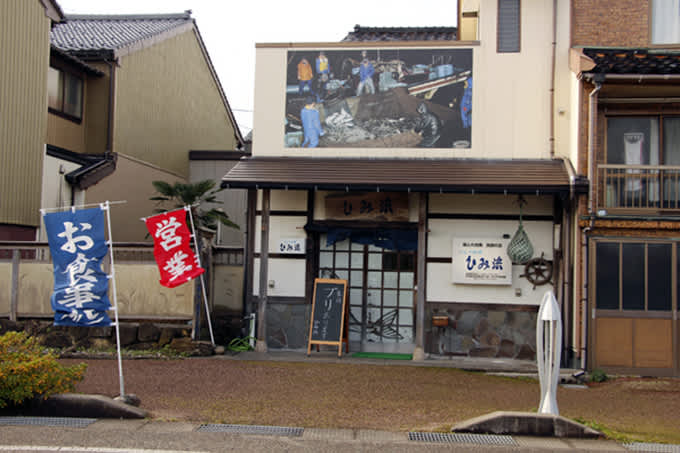
The Bounty of the Sea Meets Meticulous Chefs

At Banya Ryori Himihama, one of the area’s restaurants serving fresh Toyama Bay seafood, the standards are exceptionally high. The restaurant’s owner, Mr. Miyagawa, says that he won’t accept Himi winter yellowtail weighing less than ten kilograms because the depth of flavor and distribution of fat are better on a heavier fish.
The shop serves a variety of locally caught seafood, but Himi winter yellowtail is a specialty. Try the Buri Shabu course to enjoy a taste of the fish served several ways, including raw buri sashimi, flame-broiled buri, and lightly boiled buri shabu.
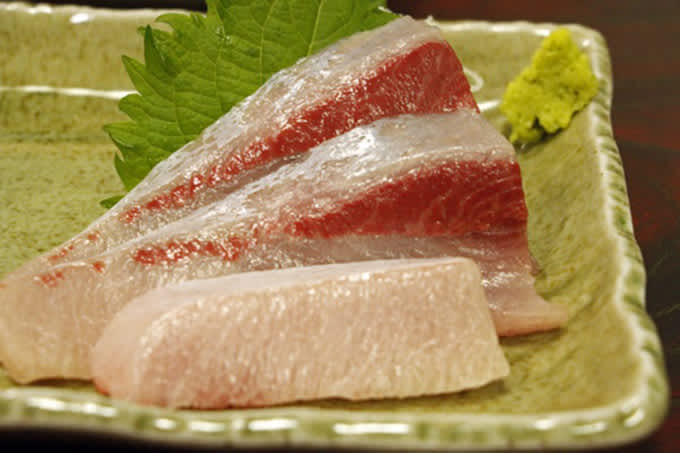
The texture of the painstakingly selected Himi winter yellowtail is without compare, particularly the otoro area (the fattiest part of the fish). Expect the yellowtail to melt in your mouth as readily as the palate-cleansing ice cream served at the end of the course.
A Feast for the Eyes and the Palate

Marvel at an ocean that is streaked neon blue by firefly squid in Namerikawa. Called hotaru ika in Japanese, the luminescent cephalopods can be seen and savored for a short time in spring. The delicacy is so strongly associated with the season that, for locals, spring has not arrived until they’ve had a bite of firefly squid.
Squid season begins on the first of March and ends in May, so plan your trip wisely. The spell-binding, magical sight of the glowing squid is well worth the trip, if you are lucky enough to catch it.
The Definitive Squid Banquet

If enjoying the taste of firefly squid is on your itinerary, touch down at Niemonya, one of the area’s long-established hot-spring inns located in the mountains.
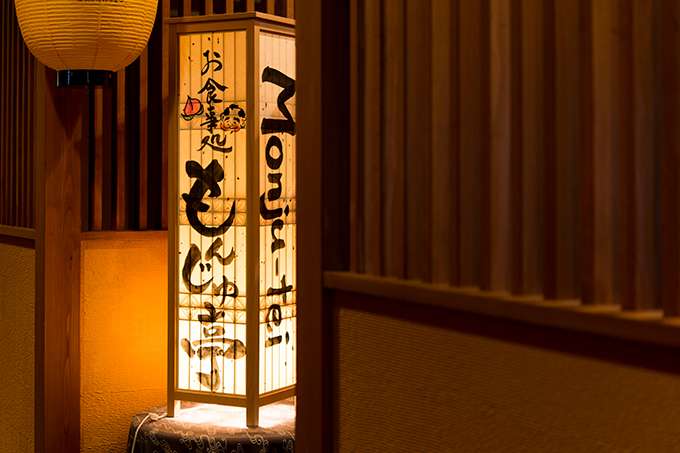
It might come as a surprise to see firefly squid, which neither keeps well nor freezes well, on the menu of a mountain inn, but Toyama’s topography means that you can be in the mountains and close to the coast at the same time. Indeed, squid caught in the predawn hours can be delivered to the inn before the morning is out.

For a real treat, try the inn’s firefly-squid kaiseki, a multicourse meal of squid and more squid.

Relish the different textures and flavors, and by the end of the banquet, you will have eaten approximately sixty squid. A true gastronomic experience to be savored!
See the Miracle of Bioluminescence in a Pitch-Black Sea

Located in the waters between the cities of Namerikawa and Uozu is the firefly-squid habitat Gunyukaimen, which is designated as a Special Natural Monument. In these waters you can catch a glimpse of luminescent squid on the Firefly Squid Boat Tour.
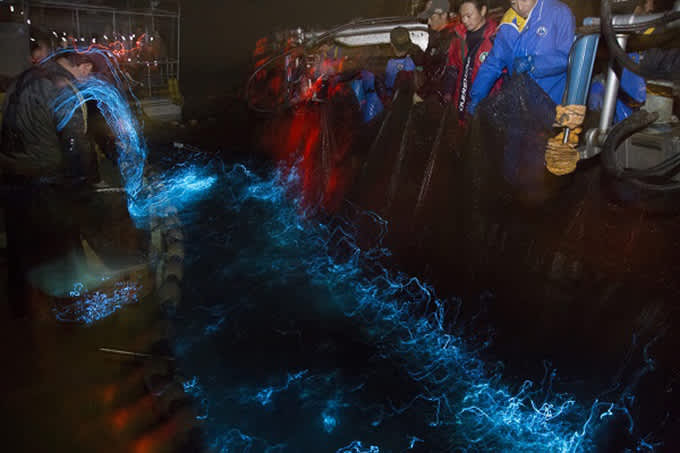
The tours are popular and sell out quickly, despite the 3:00 a.m. departure time.
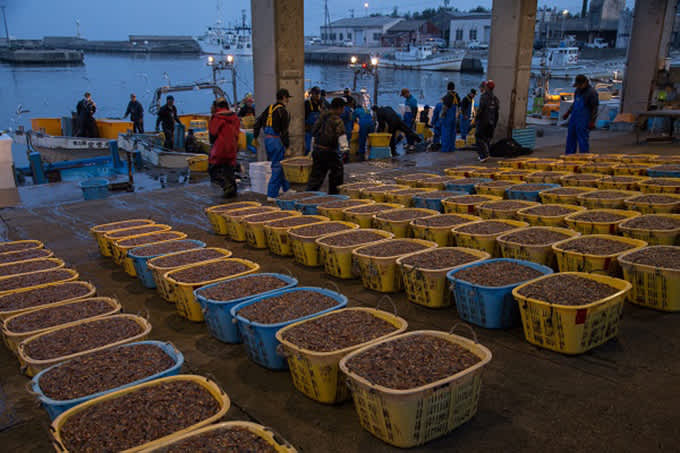
If luck is on your side, however, you’ll be met with the incredible sight of thousands of tiny shimmering squid.

For memories as brilliant as the glow of a firefly squid, make your way to Toyama. Treat yourself to seafood considered to be some of the finest in the country, and delight in the incredible scenery and extraordinary sights. Regardless of the season, you’re in for a rare and wonderful experience.
Contact Information
Firefly Squid Boat Tour (Namerikawa City Tourism Association)
410 Namerikawa-shi, Nakagawara, Toyama Prefecture 936-0021
How to Get There
Toyama Prefecture is located on the Sea of Japan in the Chubu (central) region of Japan. The prefecture can be accessed by the Hokuriku Shinkansen line and by air with direct flights from Tokyo and Sapporo landing at Toyama Kitokito Airport, which is 30 minutes by bus or taxi from the prefectural capital, Toyama. Himi is located approximately 35 kilometers from the city of Toyama (about 50 minutes by train between the two cities). Uozu (the closest station to Niemonya) is located approximately 28 kilometers from the city of Toyama (about 24 minutes by train between the two cities). Namerikawa is approximately 17 kilometers from the city of Toyama (about 15 minutes by train between the two cities).
Recommended Itineraries
Abundant in nature with both coastal and mountainous regions, Toyama Prefecture offers adventure for everyone. Find inner peace while admiring 500 Buddhist arhat statues at the historic temple of Chokeiji, located approximately twenty minutes from Toyama Station. Not far from the temple, find spectacular views of Toyama Bay and the Tateyama mountain range at Mt. Kureha Park Observatory. During cherry-blossom season, head to the Matsukawa Riverside to admire spring’s ephemeral blossoms.
Related Links
Official Toyama City Tour Guide (English)
Firefly Squid Boat Tour (Japanese)
Map
Featured Cuisine
Himi winter yellowtail, called Himi kanburi in Japanese, is a winter delicacy that is in season between the end of November and February. The fish is known for its fatty flesh, which melts in the mouth. Visitors will find it served raw as sashimi and cooked various ways. Firefly squid, called hotaru ika in Japanese, is in season between March and May. It is known for both its incredible luminescence and its rich flavor. Visitors will find it served both raw and cooked in a variety of dishes.
-
Author
Author: Helen
Helen hails from a small town in Central Canada. Shortly after completing an honors degree in history, a desire to study karate in its birthplace drew her to Japan. Since arriving in 2006, she has earned her second dan in Goju-ryu karate, fallen head-first into Japanese culture by way of cross-cultural marriage, and written about Japan for a variety of publications. She loves traveling by Shinkansen, curling up under a heated kotatsu blanket, and eating anything with mochi.
All information is correct as of the time of writing.
Please check for the latest information before you travel.




















































